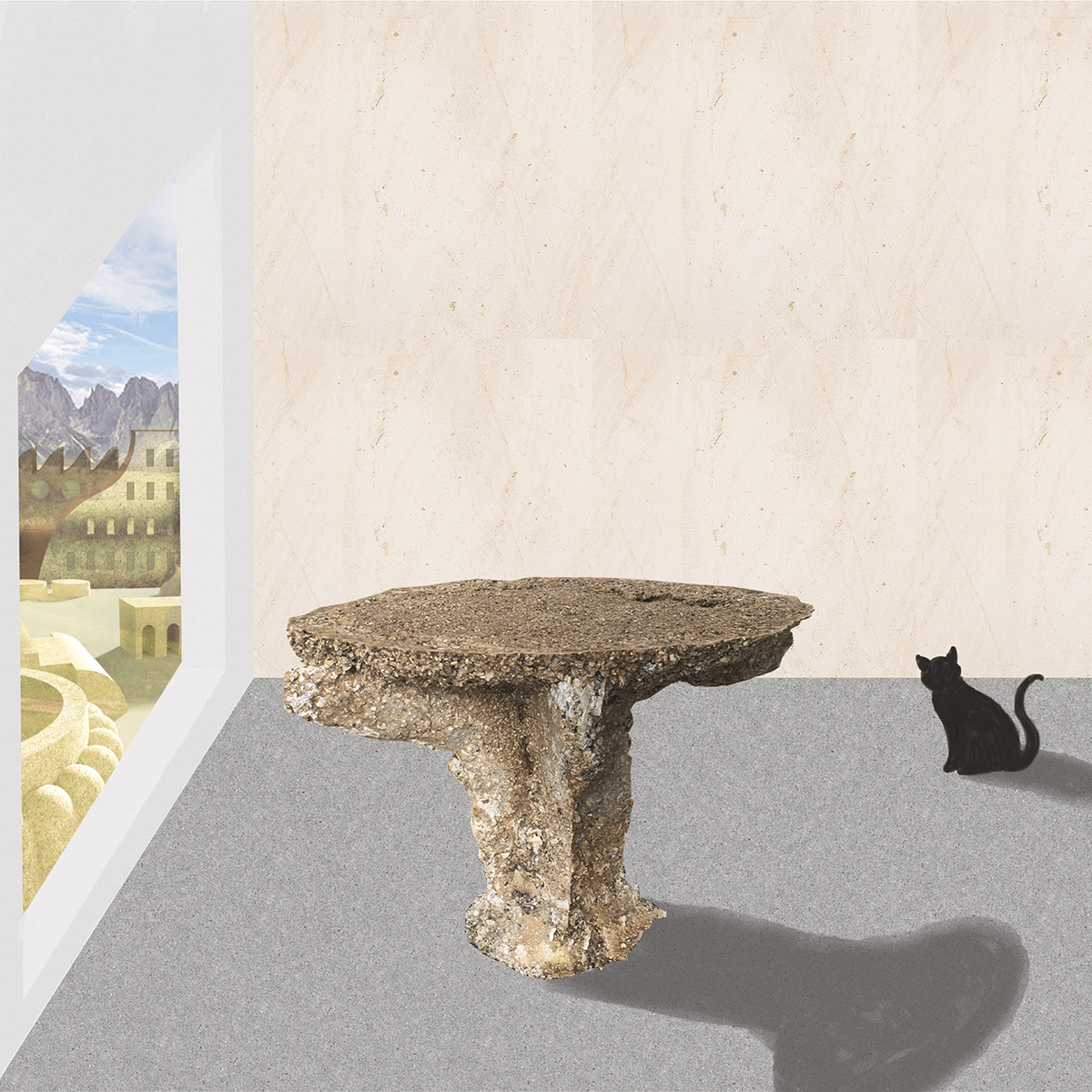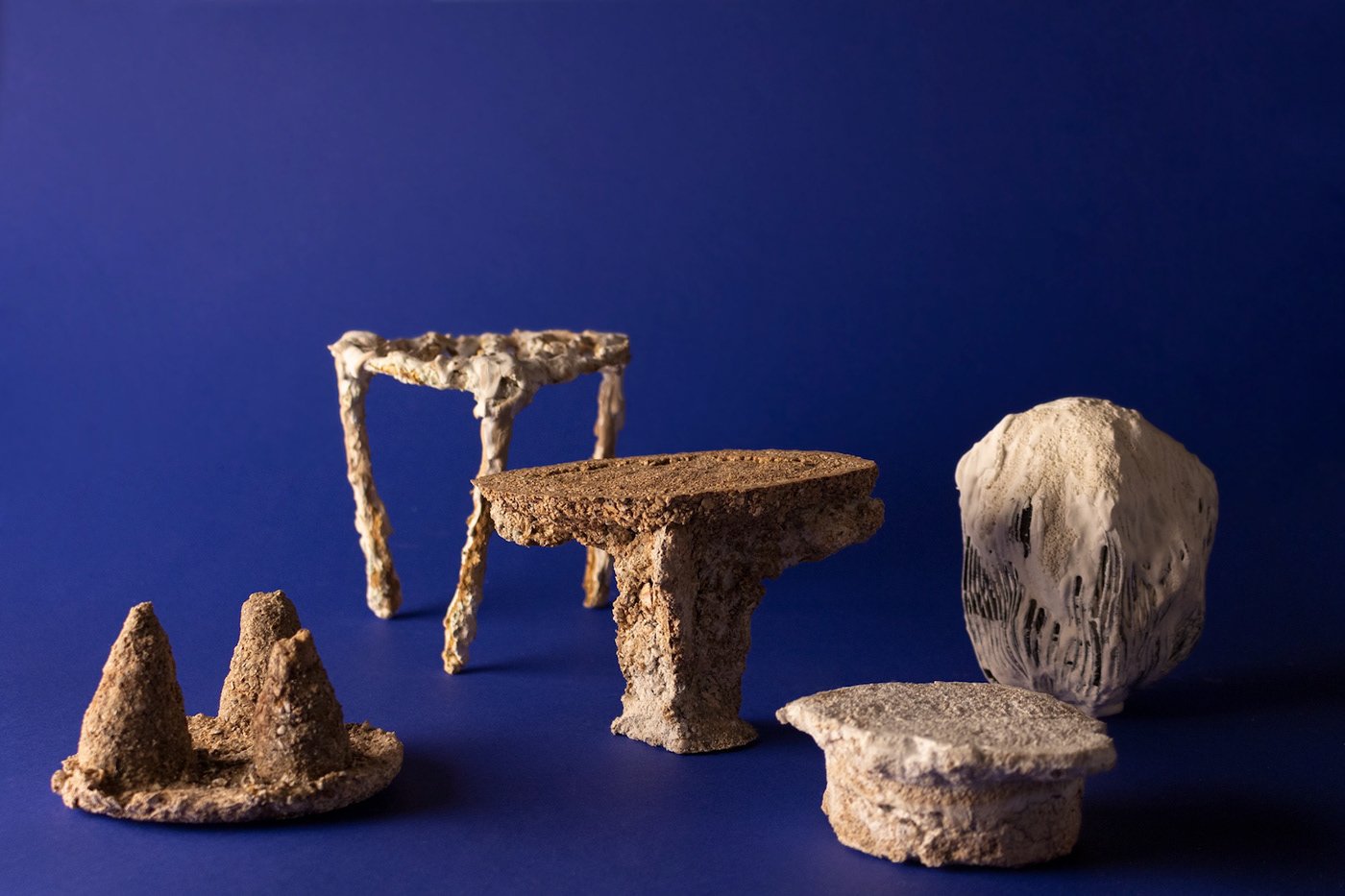
Mineral Forming ─ Geopolymerization
Material research 2021
Introduction
Calcium carbonate is a common material widely spread on Earth; it is dissolved in rivers and lakes; we can find it in skeletons and shells; it forms "tufa" and "stalagmites"; it builds up caves and mountains and it is also in our kettles and water pipes. It has various applications in our life in agriculture, food industry, glass industry and cement production. However, the main resource of limestone nowadays is mostly from quarries, we extract from the land and create messy "tailings" in the landscape. What kind of alternatives could we find in our surroundings?
One of the forms of calcium carbonate is "limescale", a matter we produce in our water softening processes yet is often overlooked and discarded. In my research, I attempt to reintroduce limescale as a promising material to build and live with. I research how to reconfigure limescale and focus on creating "geopolymers", a chemical process to bind inorganic materials together. Based on the material research, I speculate what a "neo stone age" would look like, and how this harvesting and production method could be integrated into the city, and change both our interiors and exteriors. Can we become Earth dwellers in this domesticated landscape?
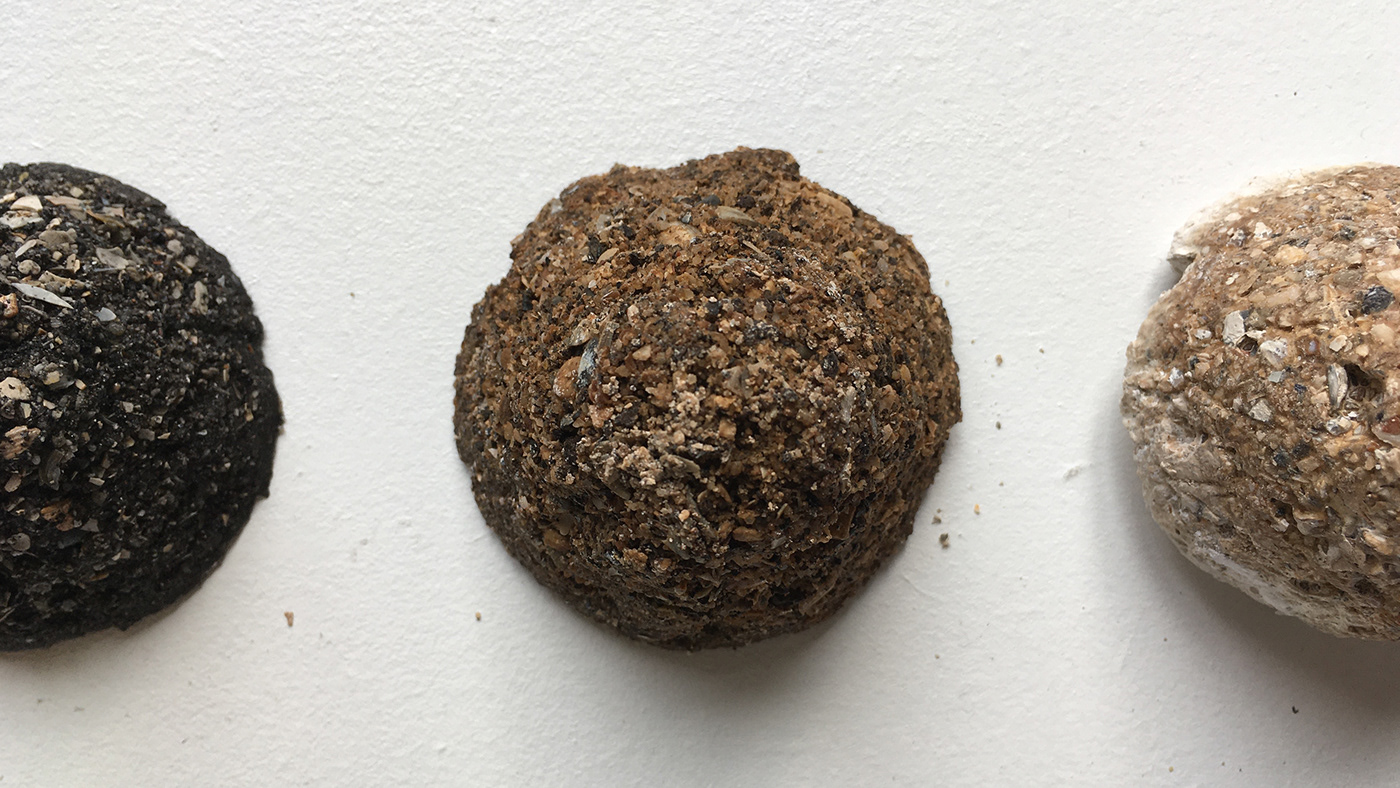
Seashells + waterglass
Geopolymer
Geopolymerization is the process of polymerizing silica and alumina containing minerals using alkali solvents. Discovered (or rediscovered) by Joseph Davidovits in France, geopolymer cements are likely similar to materials used in antiquity. Although cements are the most common application of geopolymerization, a range of refractory and structural products have been produced. The products of geopolymerization are called poly-silicates. (From Open Source Ecology)






Limescale
Limescale is a hard chalky deposit, consisting mainly of calcium carbonate (CaCO3), that often builds up inside kettles, hot water boilers, and pipework, especially that for hot water. It is also often found as a similar deposit on the inner surfaces of old pipes and other surfaces where "hard water" has evaporated. (From wikipedia)
In brief, limescale is an unwanted matter and we have developed various ways to remove it from our surrounding. What if we can make it as building material? However, it is difficult to collect massive quantity of limescale in a short time. Thus, I trace back to water purification center and discover the by- product, mineral pellets, from water softening process. The mineral pellet consists mostly calcium carbonate and as long as we need drinking water, it will be produced.
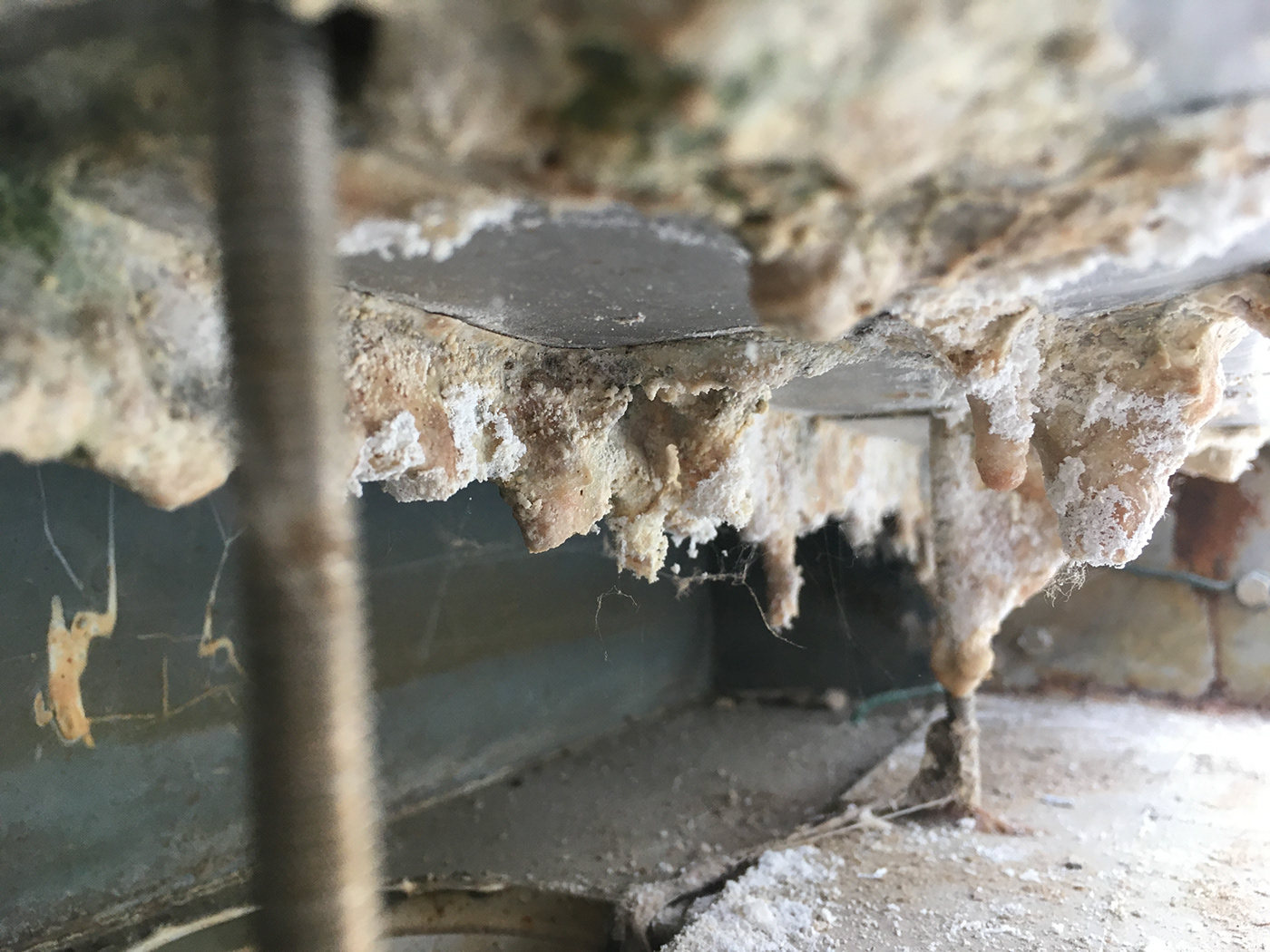

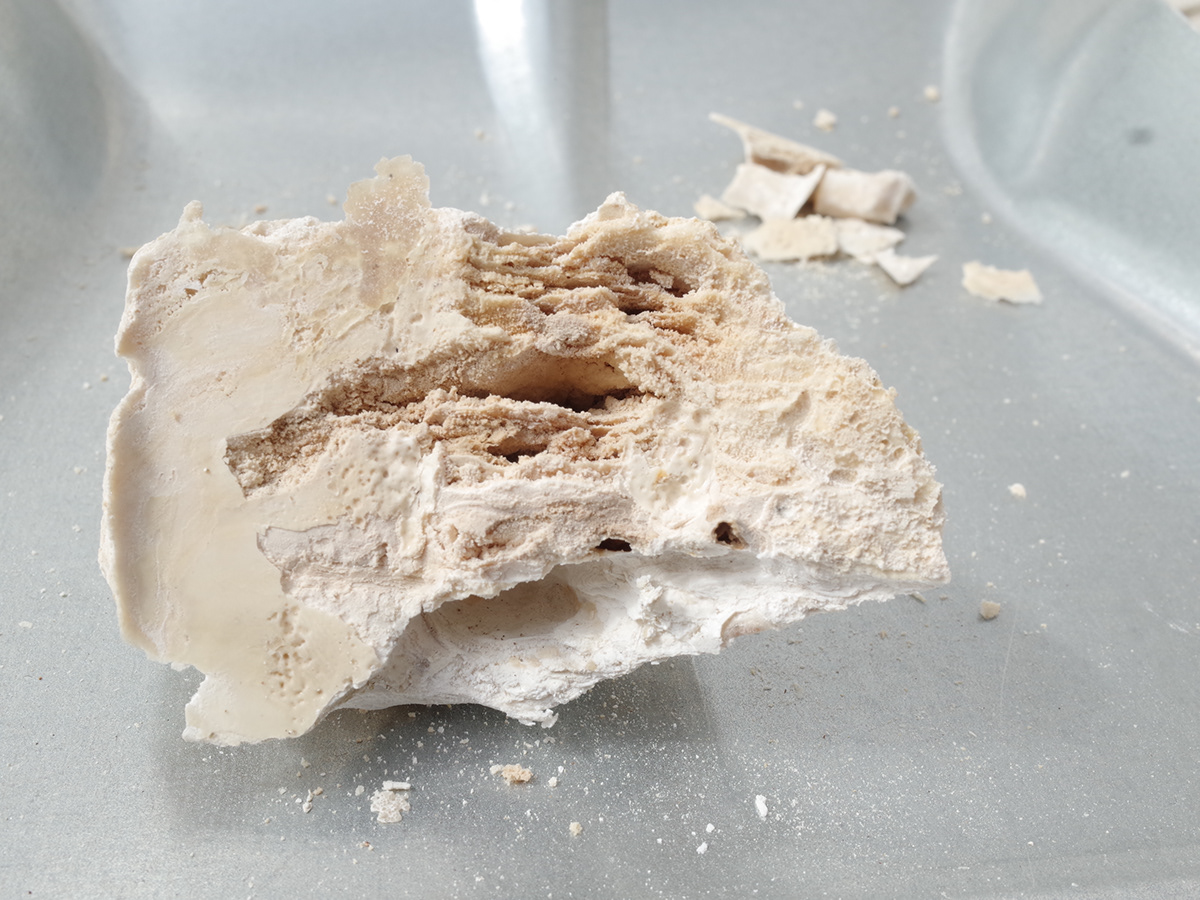
Limescale from a swimming pool

Neo scholar stone
Form follows Gaia
What can industrial design learn from the geo-process of mineral formation? From the experiments, it reveals a new relationship between the design and form: the designer was the "form giver", working on how to fully control the shape via manufacturing process, focusing on the result, but now, via working with the geo-process, the designer creates skeleton, adjusts parameters, and the manufacturing process grows/builds upon it, finalizing the design. It means the form created by part human, part Gaia. For industrial design, it creates a new design language─form follows Gaia. From the material level, the research provides an example of how minerals can be applied to design, the resource around us yet ignoring. In brief, learning for mineral formation is a starting point for harvesting from geo-processes and gives the industrial design a new "client", Gaia. Perhaps outsourcing to nature is a bit idealistic, but duplicating nature is resourceful, in the research, has shown the potentials of mimicking the geo-process.
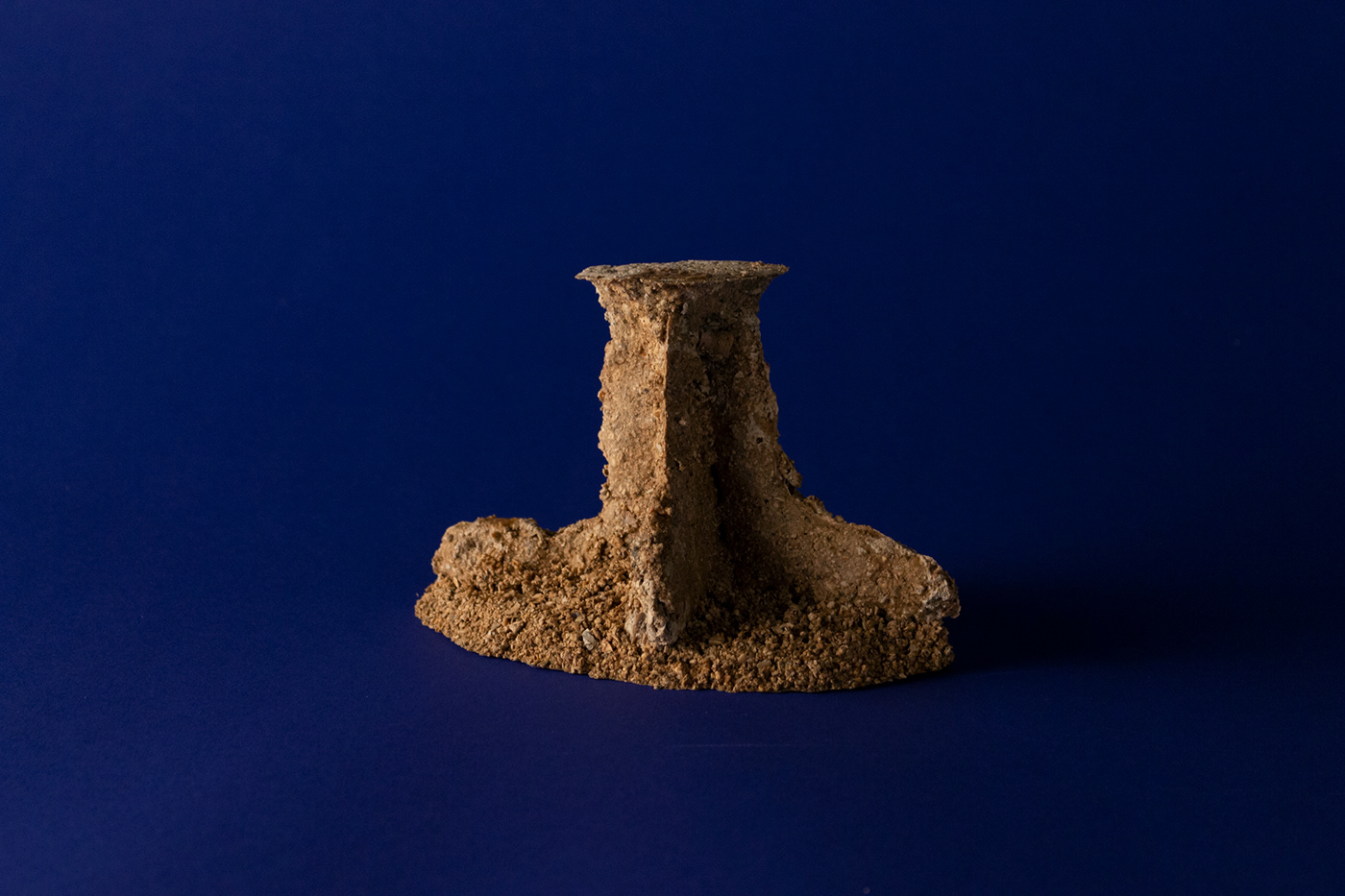
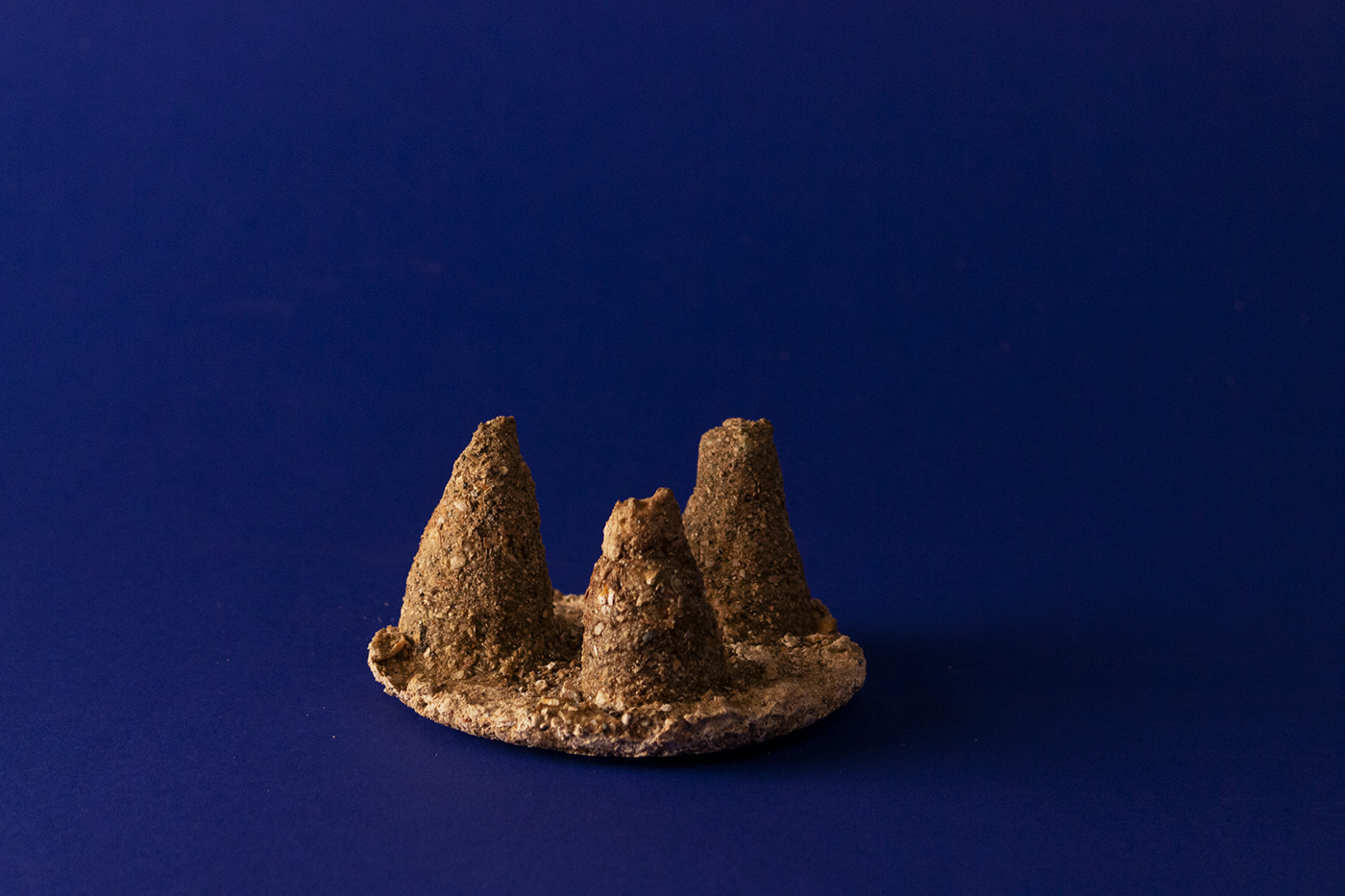


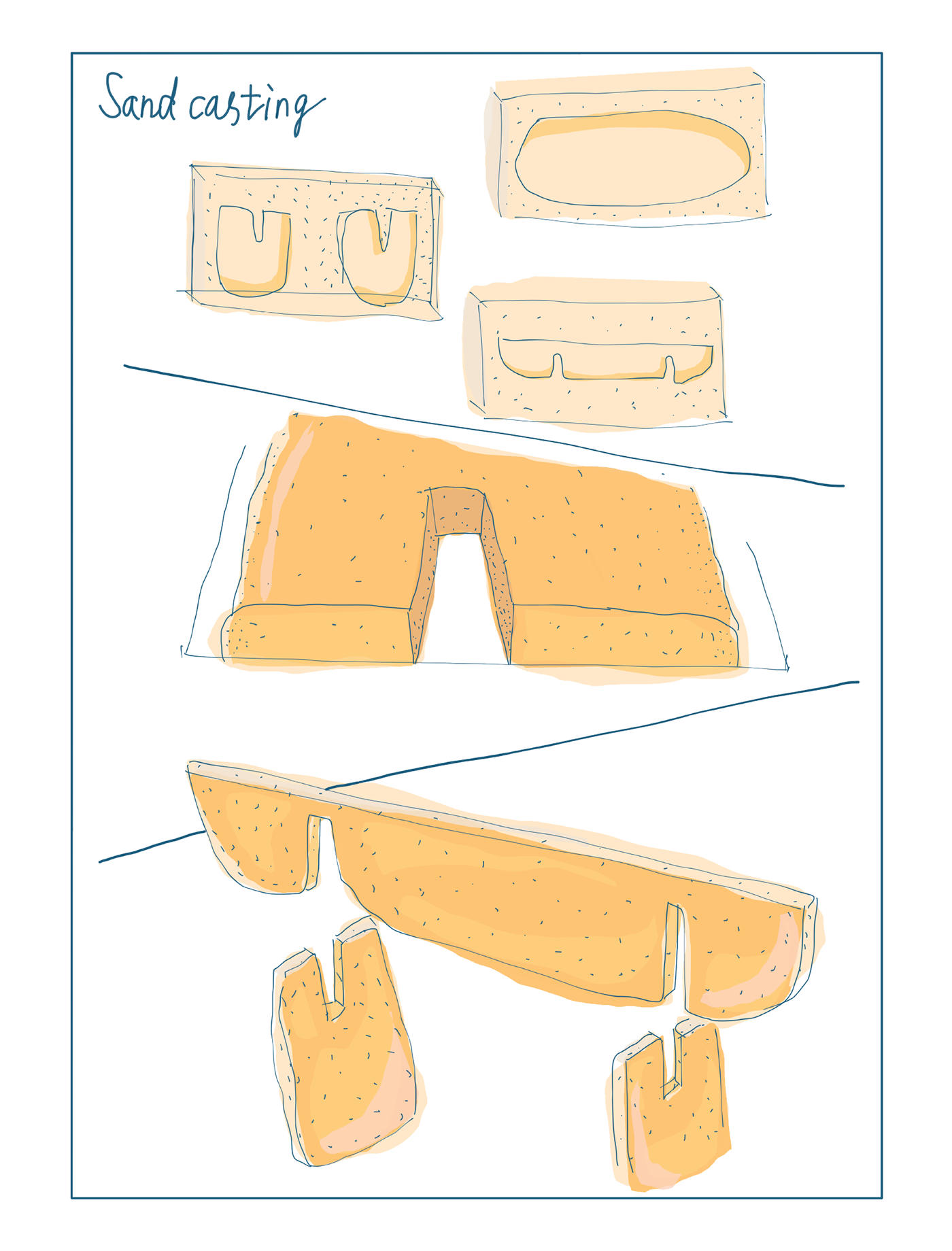
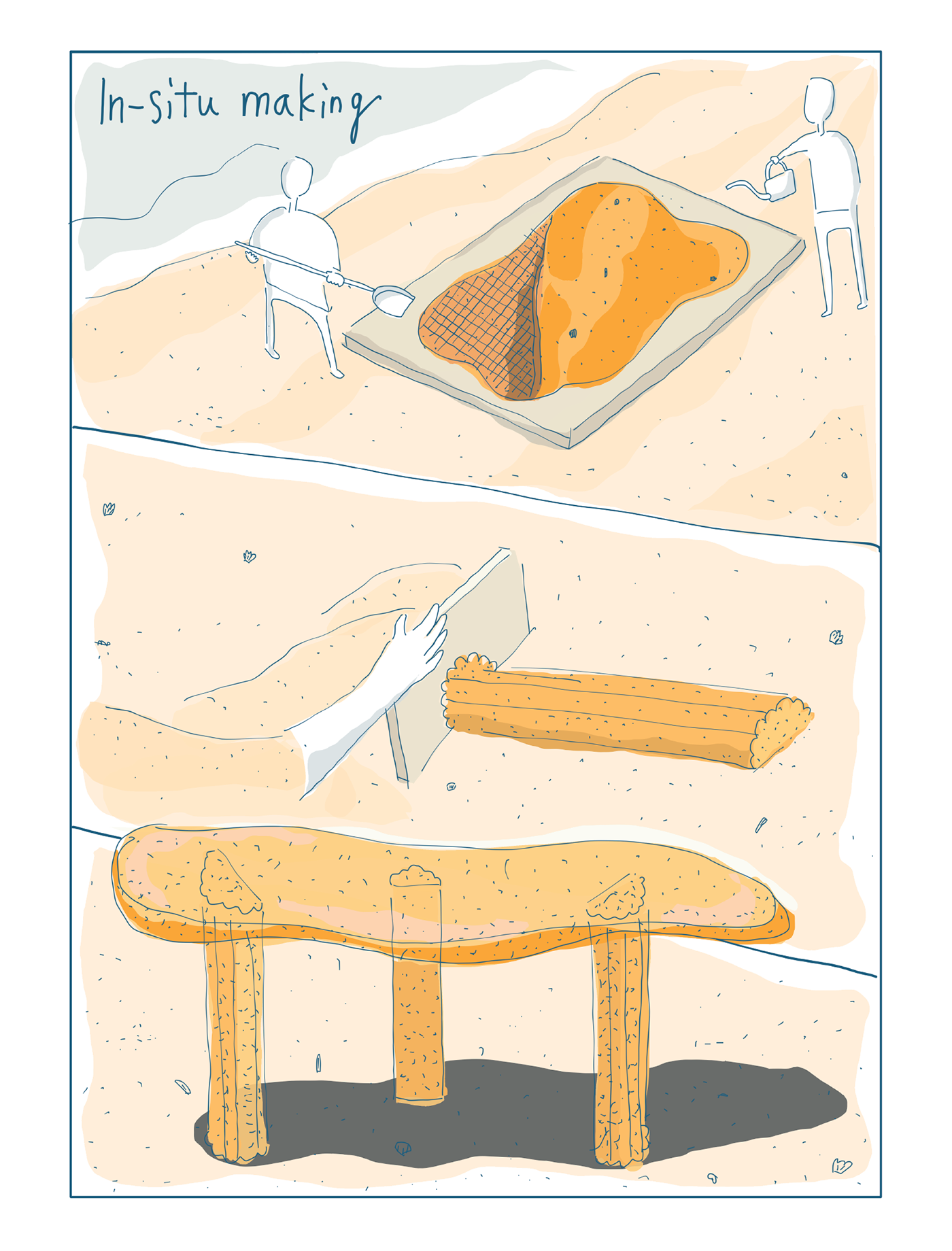


Neo Stone Age
It all started from observation to geomorphology and material experiments. I began intuitively to experiment on the materials around me, from limescale to seashells. Furthermore, material experiments helped to accrete ideas and insights; it triggered me to speculate about the future; this immersive experience helps the imagination. I believe the future industrial designers do not serve computers and factories only but broader, for myself is Earth, the critical zone and Gaia; becoming the flexible mediator like minerals.
What can the Neo-stone age bring for today? The Neo-stone age can be regarded as an instruction for the plausible future of minerals, precisely calcium. Furthermore, the Neo-stone age represents an epoch that human-system follows the geo-processes; learning from the monsters; flowing within the critical zone; supporting Gaia. On the other hand, it shows a fundamental perspective to reconsider the timescape from the material level. From this perspective, the human-system has never invented any things but recurred in the geo-process. For instance, humans did not invent electrolysis but developed the method to proceed with it on a human-scale. In summary, the Neo-stone age attempts to shift from a human-centered view to an earth-centered perspective.


